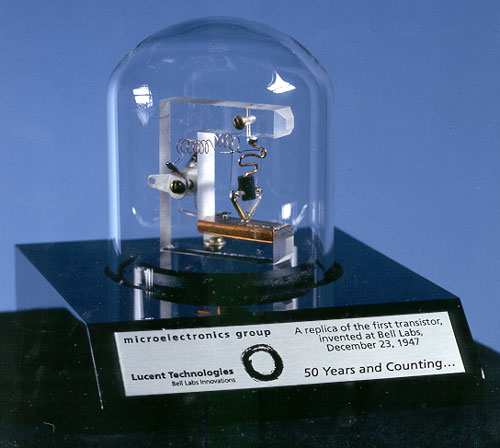
Jonathan Bartlett thinks he knows of one:
It turns out that humans don’t just go from “incompetent” to “competent” at a given task. We develop new ways of doing things that didn’t exist before. These new developments are part of the learning curve concept.
A rule of thumb for the learning curve is that you can achieve an average 20% decrease in costs every time you double your output. But this rule tells us nothing about where that 20% will come from. It tends to originate from a variety of sources …
While the learning curve is not an exact science, the interesting part, in my view, is that such a non-physical mechanism can be measured at all. Jonathan Bartlett, “Can we make money by losing money” at Mind Matters News
Note: The success of the transistor, he notes, depended on shrinking the cost to next to nothing.
If we needed a trillion copies of the device pictured above, chances are we’d still be at it. And it would never do what can be done with newer approaches today anyway.
Follow UD News at Twitter!
See also: Jonathan Bartlett and the war on Occam’s Razor
UD author’s suggested correction to calculus teaching goes viral. The story we ran on the topic at Mind Matters has gone viral via Slashdot, with five thousand views since yesterday afternoon. (A paper about CALCULUS?) Figures, Bartlett must have a point about the problem.
and
Researchers: Microbes “Jeopardize” Neo-Darwinism (And Jon Bartlett’s Response)